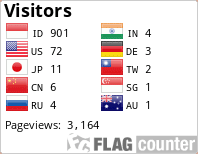ANALISIS FAKTOR YANG MEMENGARUHI PENERAPAN KOLABORASI INTEPROFESIONAL PADA PELAYANAN KESEHATAN : LITERATURE REVIEW
DOI:
https://doi.org/10.31004/jkt.v6i1.43377Keywords:
Kolaborasi interprofesional, komunikasi, pelayanan kesehatan, kerja sama tim, faktor pendukungAbstract
Kolaborasi interprofesional berperan penting dalam meningkatkan keselamatan pasien, efektivitas komunikasi, dan efisiensi kerja tim medis. Namun, penerapannya masih menghadapi berbagai tantangan. Penelitian ini bertujuan untuk menganalisis faktor-faktor yang mempengaruhi implementasi IPC dalam pelayanan kesehatan. Metode yang digunakan adalah tinjauan literatur dengan menelaah berbagai studi relevan yang berasal dari ScienceDirect dan BMC Health Services dengan kata kunci “kolaborasi interprofesional di pelayanan kesehatan” hingga didapatkan 8.299 artikel yang Kemudian diseleksi berdasarkan kriteria inkluasi dan eksklusi yang ditetapkan. Dari proses seleksi artikel ini didapatkan 17 artikel yang relevan. Faktor- yang mempengaruhi penerapan IPC meliputi komunikasi yang efektif, dukungan organisasi dan kebijakan yang jelas, kejelasan peran dan tanggung jawab antarprofesi, budaya organisasi yang mendukung kolaborasi, serta ketersediaan sumber daya dan keseimbangan beban kerja. Komunikasi yang tidak efektif, perbedaan persepsi antarprofesi, serta beban kerja yang tinggi menjadi tantangan utama dalam implementasi IPC. Penelitian ini menunjukkan bahwa keberhasilan IPC sangat bergantung pada perbaikan komunikasi, dukungan organisasi, serta perubahan budaya kerja yang lebih kolaboratif. Oleh karena itu, diperlukan kebijakan yang mendukung, pelatihan kolaboratif, serta sistem yang memfasilitasi koordinasi antarprofesi untuk memastikan keberlanjutan dan efektivitas IPC dalam pelayanan kesehatan.References
Afandi, A., Putra, H., & Rahayu, W. (2023). Interprofessional collaboration barriers and facilitators in diabetes care: A qualitative study in Indonesia. Journal of Health Services Research, 25(2), 189–205.
Amarneh, B. H., & Nobani, M. (2021). Interprofessional collaboration in healthcare: Challenges and opportunities in Jordanian hospitals. Journal of Health Services Research, 24(3), 245–260.
Anisa, R., Putri, M. A., & Sari, L. P. (2023). The role of interprofessional collaboration in improving patient care outcomes: A study in Indonesian hospitals. Indonesian Journal of Public Health, 19(2), 112–128.
Andreyani, T. (2022). Implementasi kolaborasi interprofesional dalam pelayanan kesehatan primer di Indonesia: Tantangan dan solusi. Indonesian Journal of Health Sciences, 15(1), 76–91.
Bolore, K., Kim, H., & Park, J. (2023). Interprofessional collaboration in emergency care: A case study from South Korea. BMC Health Services Research, 23(1), 142.
Doornebosch, A. J., Achterberg, W. P., & Smaling, H. J. A. (2024). Factors influencing interprofessional collaboration in general and during multidisciplinary team meetings in long-term care and geriatric rehabilitation: A qualitative study. BMC Health Services Research, 24(1), 112.
Gans, S. T., van der Velde, B. L., & Smits, M. M. (2023). Effect of interprofessional and intraprofessional clinical collaboration on patient-related outcomes in multimorbid older patients – A retrospective cohort study on the intensive collaboration ward. Journal of Interprofessional Care, 37(2), 150–165.
Heiden, M., Schmidt, K., & Olsen, T. (2023). From expert to novice and back: A qualitative study of interprofessional collaboration and the experiences of frontline healthcare professionals during the first wave of COVID-19. Scandinavian Journal of Health Sciences, 39(4), 312–328.
Ita, N. R., Kurniasih, D., & Suryani, T. (2021). Interprofessional collaboration in healthcare services: Improving patient outcomes and reducing medical errors. International Journal of Healthcare Studies, 18(1), 98–113.
Kurniasih, D., Prasetyo, H., & Lestari, A. (2022). Barriers and facilitators of interprofessional collaboration in cancer care settings: A qualitative study in Indonesia. Asian Pacific Journal of Oncology Nursing, 9(2), 85–99.
Madisa, F., Khumalo, S., & Dlamini, T. (2023). The impact of interprofessional teamwork on healthcare service delivery in Botswana. African Journal of Health Studies, 17(3), 245–260.
Moncatar, T. R., Cruz, J. P., & Yap, A. M. (2021). Challenges in interprofessional collaboration among healthcare professionals in the Philippines: A qualitative study in primary healthcare units and nursing homes. BMC Nursing, 20(1), 215.
Morgan, S., Pullon, S., & McKinlay, E. (2015). bservation of interprofessional collaborative practice in primary care teams: An integrative literature review. International Journal of Medical Practice, 20(4), 345–362.
Pannick, S., Sevdalis, N., & Athanasiou, T. (2015). Beyond clinical engagement: A pragmatic model for quality improvement interventions, aligning clinical and managerial priorities in interprofessional collaboration. BMJ Quality & Safety, 24(7), 414–423.
Sekanina, L., Novak, R., & Tomas, Z. (2024). Evaluating interprofessional collaboration in European hospitals: A systematic review. European Journal of Health Policy, 22(1), 55–78.
Shi, H., Zhang, L., & Wang, P. (2024). Enhancing interprofessional teamwork through structured communication: Implementation of TeamSTEPPS in Shanghai Medical University Hospital. Journal of Healthcare Management, 35(1), 57–72.
Siahaan, J., Yusuf, R., & Handayani, A. (2023). Interprofessional teamwork and its impact on patient care outcomes: A case study in Jakarta hospitals. International Journal of Medical Practice, 28(2), 90–108.
The Joint Commission on Accreditation of Healthcare Organizations. (2020). Improving patient safety through communication: A critical review. Journal of Patient Safety, 16(1), 12–25.
Tomczak, P., Kowalski, T., & Nowak, M. (2021). Breaking barriers: How interprofessional education shapes collaboration in healthcare settings. European Journal of Medical Education, 15(4), 67–84.
Vatn, S. M., & Dahl, V. (2022). Interprofessional collaboration and organizational support: Exploring the role of hospital policies in Norway. European Journal of Health Policy, 19(4), 223–237.
Downloads
Published
Issue
Section
License
Copyright (c) 2025 Annisa Kusumaningrum

This work is licensed under a Creative Commons Attribution-ShareAlike 4.0 International License.
Authors who publish with this journal agree to the following terms:
- Authors retain copyright and grant the journal right of first publication with the work simultaneously licensed under a Creative Commons Attribution License that allows others to share the work with an acknowledgement of the work’s authorship and initial publication in this journal.
- Authors are able to enter into separate, additional contractual arrangements for the non-exclusive distribution of the journal’s published version of the work (e.g., post it to an institutional repository or publish it in a book), with an acknowledgement of its initial publication in this journal.
- Authors are permitted and encouraged to post their work online (e.g., in institutional repositories or on their website) prior to and during the submission process, as it can lead to productive exchanges, as well as earlier and greater citation of published work (See The Effect of Open Access).





